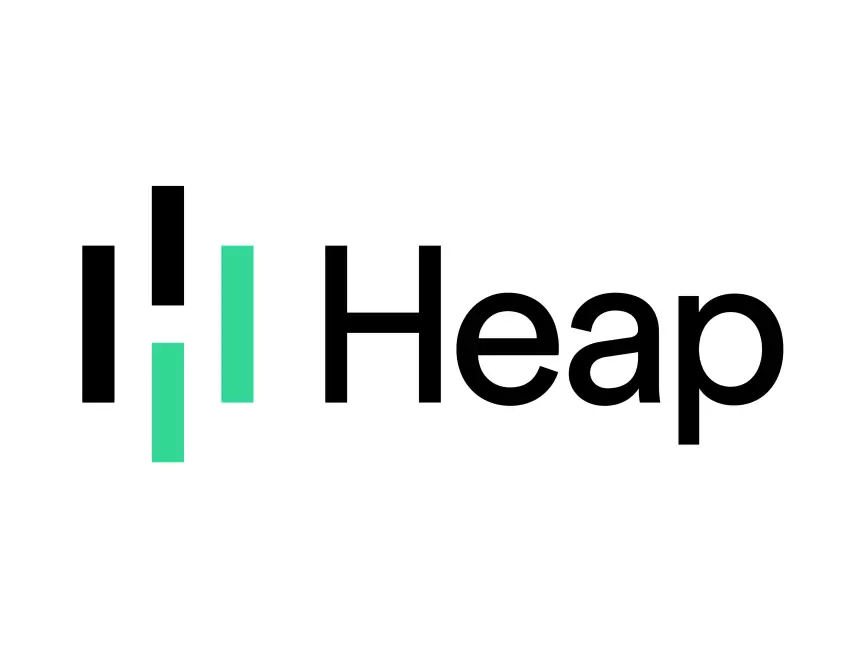In the fast-paced world of digital marketing, making informed decisions is not just an advantage—it’s a necessity. Enter the gladiators of data analytics: Looker and Heap. These two titans offer unique approaches to dissecting and leveraging your data, but which one is the champion for your needs? Dive in with me as we break down the essential aspects, starting with user experience and ease of use, to help you crown the best marketing analytics tool for your arsenal.
| Looker | Heap |
|---|---|
 |  |
| G2 Score – 4.4 out of 5 stars | G2 Score – 4.4 out of 5 stars |
| TrustRadius Score – 7.9 out of 10 | TrustRadius Score – 8.2 out of 10 |
User Experience and Ease of Use
When it comes to tools that are a central part of your daily operations, the user experience (UX) and ease of use aren’t just features; they’re the bedrock of productivity and effectiveness. Both Looker and Heap promise to transform your data into actionable insights, but the path they take and the simplicity of the journey can be worlds apart.
Looker: A Customizable Odyssey
Looker, with its robust platform, caters to those who love customization and have a penchant for precision. It’s like walking into a tailor’s shop where everything is made to measure. You can tailor your data analysis with Looker’s powerful modeling language, LookML, which allows for intricate customization of reports and dashboards. It’s a dream come true for teams with data analysts who can wield code to pinpoint specific insights.
The platform is designed with a focus on collaboration and scalability, making it a formidable choice for larger organizations or those with complex data needs. Looker enables you to dig deep into your data, offering a high degree of granularity. However, this tailored experience comes with its complexities. New users or those less technically inclined might find Looker’s learning curve a bit steep. The trade-off for customizable depth is the time and expertise required to navigate and master its capabilities.
Heap: The Intuitive Trailblazer
On the flip side, Heap takes pride in its intuitive nature. Imagine a smart, self-driving car that knows where you want to go before you even tell it. Heap automatically captures every user interaction on your website or app, from clicks to swipes, without the need for you to define events upfront. This approach removes a significant barrier to entry for marketers who might not be as technically savvy or who prefer to focus more on strategic decisions rather than on data configuration.
Heap’s interface is user-friendly, designed to get you from data to insights in the fewest steps possible. Its automatic event tracking saves you time and resources, making it easier to start analyzing your data from the moment you integrate. For small to medium-sized businesses, or for teams without dedicated data analysts, Heap offers a straightforward path to understanding your users’ behavior without the complexity.
The Verdict on User Experience
The best tool for you in terms of UX and ease of use depends significantly on your team’s structure, skill set, and what you value more: customization or immediacy. Looker is your go-to if you’re geared up for a deep dive into data with a tailor-made suit. Heap, however, is the companion that offers a helping hand, guiding you through data analysis with ease and efficiency.
Both tools present compelling arguments, but they cater to different audiences. Your choice will hinge on whether your team has the technical prowess and specific needs that Looker accommodates so well, or if you prefer the simplicity and automatic insights Heap provides, allowing you to hit the ground running.
Data Collection and Integration Capabilities
In the realm of marketing analytics, the breadth and depth of your data can significantly impact the insights you’re able to derive. Both Looker and Heap offer robust solutions for data collection and integration, yet their approaches and capabilities cater to different needs and preferences. Let’s explore how each platform handles data collection and integration, providing you with the fuel you need for your marketing strategies.
Looker: The Data Warehouse Conductor
Looker stands out by leveraging the power of your existing data warehouse. Instead of collecting data directly from your website or app, Looker connects to your data warehouse, where your data has already been collected and stored. This approach has a significant advantage: it allows Looker to analyze large volumes of historical data without any limitation on data retention. You’re not just looking at a snapshot of your recent user interactions; you’re able to analyze trends and patterns over the entire history of your data.
Integration with Looker goes beyond the basic connection. Thanks to its LookML model, you can create custom dimensions, measures, and aggregate data in ways that are most meaningful for your business. This level of integration and customization makes Looker incredibly powerful for businesses that have specific analytical needs and a well-established data warehouse.
However, this power comes with a prerequisite: you need a data warehouse and a strategy for collecting and storing your data before you can fully leverage Looker. For some businesses, especially smaller ones or those just starting with data analytics, this requirement can be a significant hurdle.
Heap: The All-Seeing Tracker
Heap takes a different approach to data collection. By integrating directly with your website or app, Heap begins collecting data on user interactions immediately, without the need for predefined events or tracking setup. This method ensures no data is missed, capturing every click, form submission, and interaction users have with your platform.
The advantage of Heap’s approach is twofold. First, it reduces the time and technical barrier to start analyzing your data. There’s no need for extensive setup or pre-planning what interactions to track. Second, Heap’s comprehensive data collection ensures you have a complete dataset from which to derive insights, uncovering opportunities or issues you might not have anticipated.
While Heap excels in data collection, its integration capabilities are also noteworthy. Heap offers connections to a wide range of tools and platforms, from advertising platforms to CRM systems, allowing you to enrich your analytics with external data sources. However, because Heap focuses on user interactions, businesses looking for deep integrations with their operational data or custom analytics may find its capabilities less flexible than Looker’s.
The Balancing Act of Data Collection and Integration
The choice between Looker and Heap in terms of data collection and integration capabilities comes down to where you are in your data journey and what your priorities are. Looker is the maestro, conducting a symphony of data from your warehouse, ideal for businesses with established data practices and specific, complex analytical needs. Heap, on the other hand, acts as the omniscient observer, capturing every detail of user interactions, making it perfect for businesses prioritizing ease of use and immediate insights without the heavy lifting of data setup.
Both platforms offer powerful capabilities, but the right choice depends on your current infrastructure, technical resources, and strategic objectives. Whether you’re building complex, customized reports or seeking to quickly understand user behavior, your decision between Looker and Heap will shape the insights you can extract and the actions you can take.
Analytics and Reporting Capabilities
Diving into the analytical depths and reporting prowess of Looker and Heap reveals how each platform empowers you to transform raw data into actionable insights. This comparison is crucial for understanding which tool aligns best with your analytical ambitions and reporting requirements. Let’s unravel the analytics and reporting capabilities of both tools to guide your decision.
Looker: The Deep-Dive Analyst
Looker’s analytics capabilities are like a deep-sea exploration vessel, designed to navigate the vast and sometimes murky waters of big data. It offers unparalleled depth in data analysis, thanks to its powerful LookML modeling language, which allows for the creation of highly detailed and customized reporting. With Looker, you can delve into complex data analysis, create intricate models, and generate reports that precisely meet your business needs.
One of Looker’s standout features is its ability to create interactive dashboards that can be as detailed and customized as you need. These dashboards are not just static reports; they’re dynamic tools that allow users to drill down into the specifics of the data, offering insights that can lead to informed strategic decisions. The platform supports a wide range of visualizations and can handle large datasets with ease, ensuring that your analytics are both comprehensive and accessible.
However, the sophistication of Looker’s analytics capabilities means there’s a steeper learning curve, particularly for those unfamiliar with data modeling or who may not have a dedicated data analyst team. The time investment in learning and developing with Looker is significant but can be well worth it for organizations that require deep, customized data analysis.
Heap: The Agile Insight Gatherer
Heap takes a more streamlined approach to analytics and reporting, focusing on agility and ease of use. It excels in providing immediate insights by automatically tracking every user interaction and simplifying the analysis process. This approach allows marketers and product teams to quickly gather insights without the need for in-depth technical knowledge or extensive setup.
Heap’s dashboards are designed to be intuitive and user-friendly, offering a range of visualization options to help teams understand user behavior at a glance. The platform enables you to create reports quickly, often with just a few clicks, making it easier to iterate on your analytics as your understanding of user behavior evolves.
While Heap offers robust analytics capabilities, its strength lies in its ability to provide quick, actionable insights rather than deep, complex data analysis. This makes Heap an excellent choice for teams that need to move fast and prioritize rapid insight over detailed data exploration.
Analyzing the Analytics
In choosing between Looker and Heap for analytics and reporting, consider the depth of analysis your organization requires and the resources you have available for data exploration. Looker is the go-to for businesses that need to conduct deep, nuanced analysis and have the technical resources to develop customized reports. Its powerful modeling capabilities offer a level of detail and customization that can meet virtually any analytical need.
On the other hand, Heap is ideal for teams looking for speed and simplicity in their analytics. It offers a straightforward path to gaining insights, making it especially valuable for teams without dedicated data analysts or those who need to quickly adapt their strategies based on user behavior.
Both tools provide powerful analytics and reporting capabilities, but the best choice depends on your specific needs, technical resources, and strategic goals. Whether you’re diving into the depths of data with Looker or navigating the swift currents of insights with Heap, your choice will significantly impact how you leverage data to drive decisions.

Related: Check out our free SEO suite

Pricing and Scalability
Understanding the pricing structure and scalability of Looker and Heap is critical for businesses planning for growth and seeking the best return on investment in their marketing analytics tool. Let’s delve into how each platform scales with your needs and what you can expect in terms of investment.
| Looker | Looker’s pricing is not publicly listed. Interested users need to contact Google Cloud sales for a custom quote. |
| Mixpanel | Heap offers both Free and custom-priced Enterprise plans. The Free plan supports up to 10,000 sessions per month, while Enterprise plan pricing is based on the volume of data and specific feature requirements. |
Looker: Enterprise-Level Investment for Scalable Growth
Looker positions itself as a premium option in the analytics tool market, primarily targeting medium to large enterprises or businesses with complex data needs. Its pricing is not publicly listed, which is common for enterprise-grade software, indicating that the cost can vary significantly based on the scale of deployment, number of users, and specific features required.
The platform is built for scalability, designed to grow with your business. Looker’s architecture allows it to handle vast amounts of data seamlessly, making it a suitable choice for organizations that anticipate significant growth or have extensive data analysis needs. The investment in Looker is not just in the software itself but in the infrastructure to support data-driven decision-making at scale.
While the initial cost might be higher compared to other tools, the value Looker provides lies in its deep customization capabilities, robust data modeling, and comprehensive analytics. For businesses that require a high degree of specificity in their reporting and are poised for growth, Looker can be a worthwhile investment, offering powerful insights that drive strategic decisions.
Heap: Flexible Pricing for Growing Businesses
Heap offers a more transparent and flexible pricing structure, catering to businesses of different sizes, from startups to enterprises. It provides a free tier with basic features, which is an excellent option for small businesses or teams just starting with analytics. As your needs grow, Heap offers scalable pricing plans that increase with the volume of data processed and the level of features required.
This flexibility makes Heap an attractive option for businesses looking for a tool that can grow with them without requiring a substantial initial investment. Heap’s ability to automatically track user interactions and provide immediate insights makes it a powerful tool for teams needing to make quick, data-driven decisions without the complexity of a custom setup.
The scalability of Heap is not just in its pricing but also in its technical capabilities. It is designed to accommodate the growing volume of data as your user base expands, ensuring that your analytics can keep pace with your business growth.
Evaluating Cost Against Capabilities
When comparing Looker and Heap on pricing and scalability, it’s essential to consider not just the cost but what you’re getting for your investment. Looker offers a high degree of customization and depth in analysis suitable for larger organizations or those with complex data needs, justifying its premium pricing. Heap, with its flexible pricing and ease of use, presents a compelling option for businesses at various stages of growth, looking for value and scalability.
The decision between the two will depend on your current size, growth expectations, and the complexity of your data analytics needs. For startups and small to medium-sized businesses, Heap’s pricing and scalability might be more appealing, providing a balance between functionality and investment. Larger enterprises or those with specific, detailed data analysis requirements might find Looker’s investment worthwhile for its advanced capabilities and scalability.
In choosing the right tool for your business, weigh the long-term benefits against the initial and ongoing costs, considering how the platform will support your growth and data analytics strategy.
Support and Community
In the dynamic landscape of marketing analytics tools, the quality of support and the strength of the community surrounding a platform can be just as important as the features it offers. Both Looker and Heap have cultivated ecosystems to help users maximize their tools’ potential, but the nature and extent of these ecosystems vary. Let’s compare the support and community aspects of Looker and Heap to understand how they can influence your choice.
Looker: Comprehensive Support and a Thriving Developer Community
Looker has built a reputation for providing high-quality, comprehensive support to its users. This support includes dedicated account managers for enterprise-level customers, an extensive knowledge base, and a responsive customer support team. The platform also offers training and certification programs, enabling users to deepen their understanding of Looker and improve their data modeling skills.
Beyond formal support, Looker boasts a vibrant developer community. The Looker Community portal is a hub for users to ask questions, share insights, and collaborate on custom solutions. This ecosystem is enriched by the Looker Marketplace, where users can find and share LookML models, visualization templates, and apps, further extending Looker’s capabilities.
This combination of formal support and a collaborative community makes Looker an attractive option for businesses that value ongoing learning and customization. The active engagement between Looker users and the development team also ensures that the platform continues to evolve in response to real-world use cases.
Heap: Accessible Support and User-Friendly Resources
Heap takes a different approach to support, focusing on accessibility and ease of use. The platform provides a comprehensive help center with articles, guides, and tutorials designed to help users get the most out of Heap without needing extensive technical knowledge. Heap also offers email and chat support to address specific questions or issues that users may encounter.
While Heap’s community might not be as developer-focused as Looker’s, it is still a valuable resource for marketers and product managers looking to optimize their use of the tool. The Heap blog and webinars offer insights into best practices, case studies, and tips for effective data analysis, catering to a broad audience of Heap users.
Heap’s emphasis on user-friendly resources and accessible support makes it an excellent choice for teams that prefer self-service resources and straightforward guidance to maximize their analytics efforts.
The Impact of Support and Community on Your Choice
The support and community surrounding Looker and Heap offer different advantages, depending on what you value in a marketing analytics tool. Looker’s comprehensive support and active developer community are ideal for businesses that prioritize customization, advanced data modeling, and continuous learning. The ability to engage with other Looker users and share custom solutions can significantly enhance your analytics capabilities.
Heap, with its accessible support and user-friendly resources, is well-suited for teams that need straightforward, effective guidance to quickly leverage analytics for decision-making. The focus on ease of use and practical insights can help businesses rapidly adopt data-driven strategies without a steep learning curve.
When deciding between Looker and Heap, consider the level of support you anticipate needing and the value you place on being part of a broader community of users. For organizations that rely on technical customization and advanced analytics, Looker’s robust support and community might be more appealing. Conversely, for teams looking for accessible support and practical resources to quickly apply analytics insights, Heap’s approach may be more aligned with your needs.
Customization and Flexibility
The ability to customize and adapt an analytics platform to fit your specific business needs is a crucial aspect when choosing between Looker and Heap. Both platforms offer a degree of customization and flexibility, but they approach it in different ways, catering to various user needs and technical proficiencies. Let’s delve into how Looker and Heap stack up in terms of customization and flexibility.
Looker: The Power of Deep Customization
Looker stands out for its deep customization capabilities, primarily through its modeling language, LookML. This powerful tool allows users to define and model data in highly specific ways, creating custom metrics, dimensions, and data relationships that reflect the unique aspects of their business. Looker’s approach gives data teams the flexibility to tailor their analytics environment precisely, from the creation of bespoke reports and dashboards to the development of complex data models.
Moreover, Looker’s platform is built to integrate seamlessly with other tools and databases, enabling businesses to create a unified data ecosystem. Its API allows for further customization and automation, offering the possibility to embed analytics directly into other applications or automate data workflows.
This level of customization and flexibility makes Looker particularly appealing to organizations with specific, complex data analytics needs and the resources to invest in developing custom solutions. It’s ideal for businesses looking for not just an analytics tool, but a platform that can be intricately molded to their operational framework.
Heap: Flexibility Through Simplicity
Heap offers a different kind of flexibility, focusing on simplicity and ease of use. While it may not offer the same depth of customization as Looker, Heap allows users to quickly and easily set up analytics without requiring a deep technical background. Its automatic data collection means that every user interaction is tracked from the start, giving businesses a comprehensive dataset to work from without the need for upfront customization.
Heap’s interface allows for flexible analysis, with users able to create and adjust reports and dashboards without coding. This simplicity extends to its segment creation and event definition, which can be done retroactively, allowing teams to analyze past user behavior without having set up specific tracking in advance.
While Heap may not offer the same level of customization as Looker, its flexibility lies in its ability to adapt to a business’s evolving needs without requiring significant technical effort to reconfigure or maintain the analytics setup.
Choosing Between Customization and Ease of Use
The choice between Looker and Heap in terms of customization and flexibility largely depends on your organization’s specific needs and resources. Looker is the go-to option for businesses that require a high level of customization and have the technical expertise to leverage LookML for building a completely tailored analytics solution. Its power and flexibility are well-suited for complex analytics scenarios and integrating detailed business logic into your data analysis.
On the other hand, Heap’s strength lies in its ability to provide flexible, actionable insights quickly and with minimal setup. It’s ideal for businesses that value ease of use and speed over deep customization, or for those without extensive technical resources dedicated to analytics.
Both platforms offer valuable features, but understanding your team’s capabilities and your business’s unique needs will guide you toward the right choice. Whether you prioritize the ability to customize every aspect of your analytics or prefer a more straightforward, adaptable approach, considering how each platform aligns with your goals is essential.
Conclusion
In the dynamic world of marketing analytics tools, both Looker and Heap offer distinct advantages tailored to different organizational needs and preferences. Looker shines with its deep customization capabilities and robust data modeling, catering to businesses with complex analytics needs and the resources to leverage them. Heap, on the other hand, appeals to those seeking simplicity and speed, with its automatic data collection and user-friendly interface enabling quick insights without extensive setup.
The choice between Looker and Heap ultimately hinges on your specific requirements—whether you prioritize the depth and precision of Looker or the agility and ease of use offered by Heap. Each tool has the potential to transform your data into actionable insights, driving your business forward. Consider your team’s technical proficiency, your analytical needs, and your long-term strategy when making this crucial decision, ensuring that the platform you choose aligns with your vision for growth and success in the ever-evolving digital landscape.
Read Next:
- Long-Tail Keyword Strategy: Skyrocket Your Startup’s SEO ROI
- Aligning Startup SEO Budget with Business Objectives
- Startup SEO ROI: Analyzing Customer Lifetime Value Impact
- Budgeting for Startup SEO Tools: Maximizing ROI
- 31+ Top Social Media Management tools Compared! (2023)






















Comments are closed.